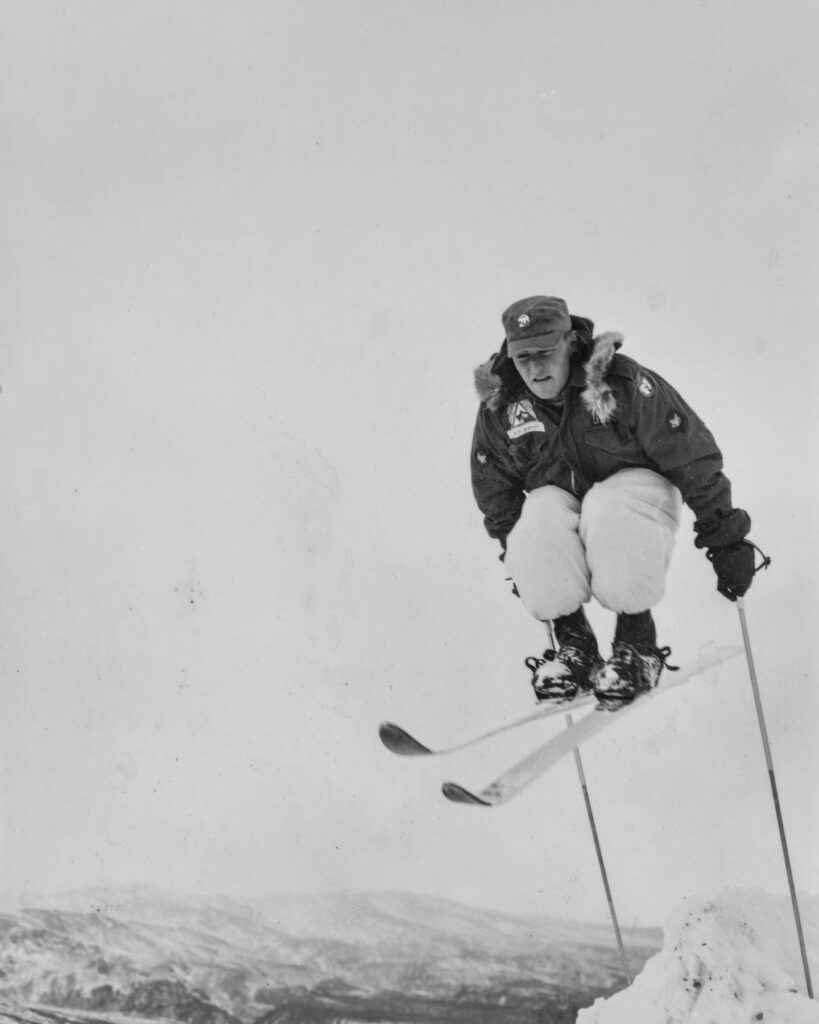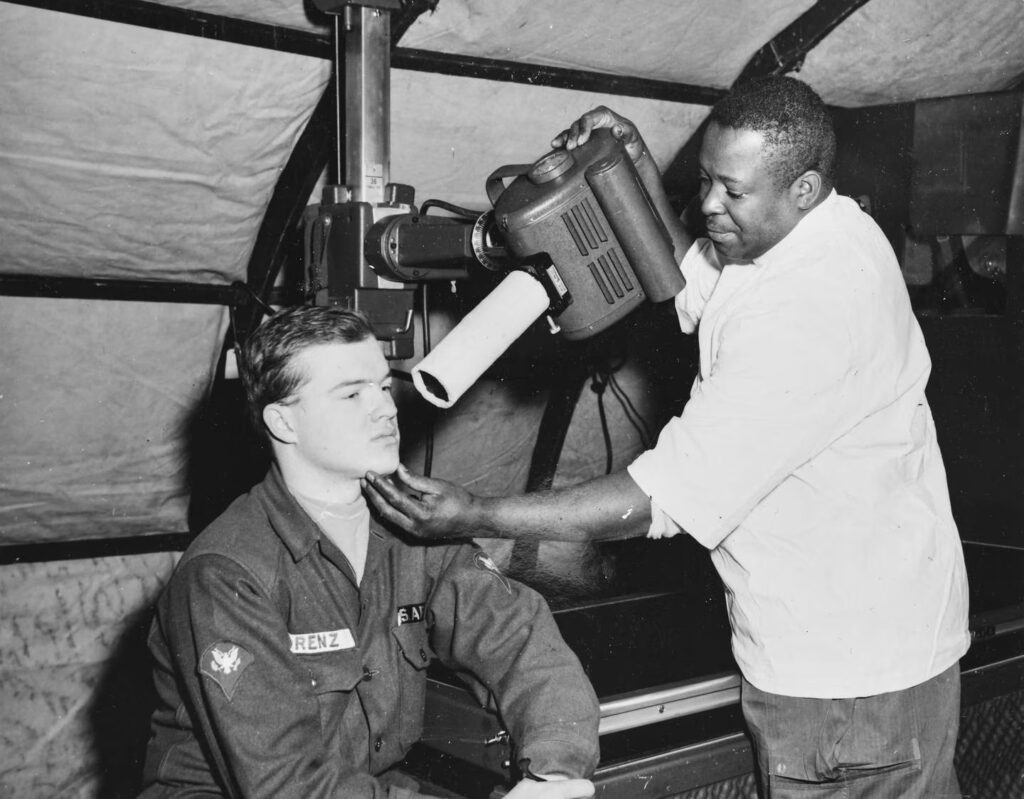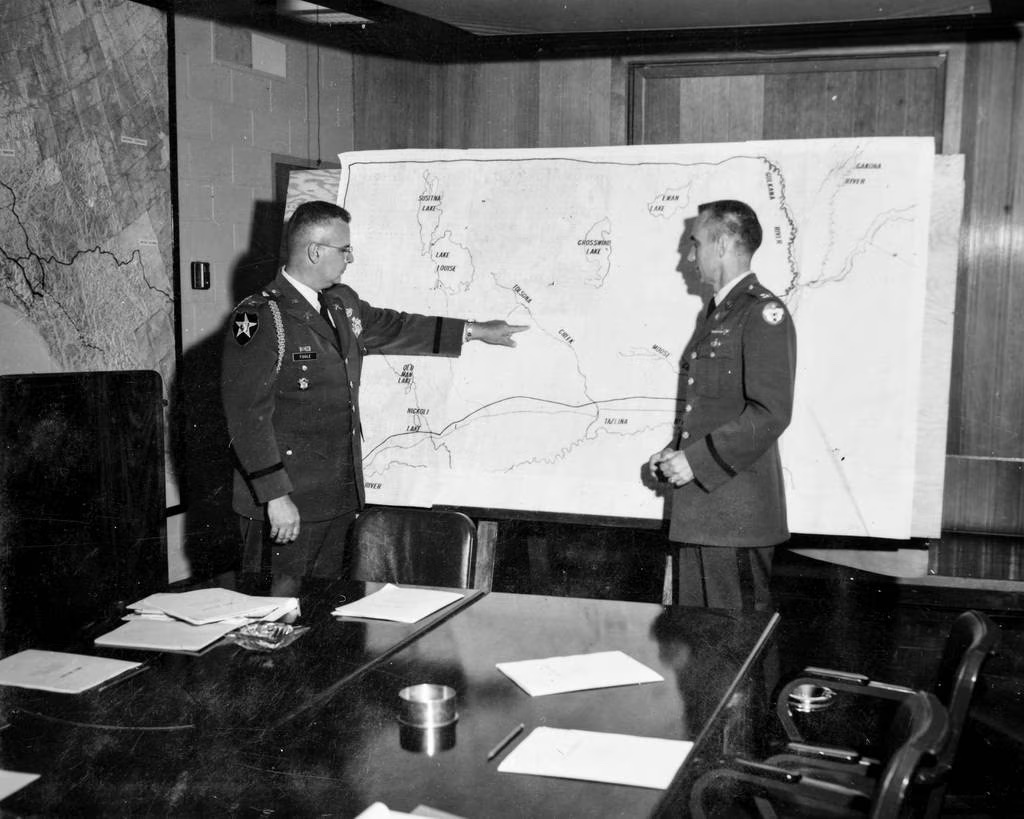On Feb. 15, when Senior Airman Jordan Smith was helping her colleagues clean out storage areas in the 673rd Air Base Wing public affairs office at Joint Base Elmendorf-Richardson, she wasn’t sure what she would find.
Before long, she happened upon a piece of Army history, tucked into dilapidated binders — 1,444 silver gelatin large-format black-and-white prints, virtually all complete with typed captions, documenting three major Army training exercises that occurred between 1959 and 1963. The photos were taken by uniformed Army Signal Corps photographers.
And thanks to her and the other airmen and civilians of the wing public affairs office, all of them, less a few duplicates, were digitized and published online three months later. The project provided a unique visual window into the Army’s Arctic lifestyle more than 60 years ago; most such photographs are held at the National Archives and are not easily accessible online.
Army Times spoke with the two Air Force civilians — McCann, the base’s webmaster and public affairs editor, and Justin Connaher, the base’s lead photographer and visual studio manager — who led the digitization effort. Both are Army veterans.
The top Army officer in Alaska, Maj. Gen. Brian Eifler, praised their work in a statement emailed to Army Times. The 11th Airborne Division commander said, “It’s hard to overestimate the value of this historic find and the preservation work by the 673d team.”
Eifler and his deputies have emphasized heritage as part of their efforts to instill a sense of camaraderie among troops there.
“As we move forward on our mission to regain Arctic dominance, the ability to look back at these types of extreme cold weather training events from 60-plus years ago will give us a better historic perspective and a connection to the roots of our Arctic Ethos,” Eifler added. “We have come full circle to today with our Arctic exercises as a part of Joint Pacific Multinational Readiness Center.”
‘A labor of love’
After discovering the photos, McCann and Connaher quickly realized the enormity of the task at hand. Their supervisor, Air Force Maj. Clay Lancaster, realized they were obligated to preserve the records, but wanted them to be made as accessible as possible.
“The binders were not in great shape,” McCann, who deployed to Iraq twice as an enlisted public affairs soldier, recalled. “Some of the photos were falling off; some of the cutlines were falling off.”
So McCann and Connaher researched what archival techniques and equipment they would need to produce original-quality resolution scans of the photos. Connaher, luckily, had worked in archives during a college internship, so he knew where to find techniques and instructions.
Ultimately, their team set up a copy stand where Connaher and others — civilian Joey Miller, Airman 1st Class Julia Lebens and Senior Airman Patrick Sullivan — took photos of the vintage prints. The ad hoc setup included what McCann described as their “happy lights” — the military-issued sun lamps that help Arctic-based personnel ward off Vitamin D deficiency during the long nights of the winter months. They then used photo editing software to enhance the reproductions.
Simultaneously, McCann retyped the captions that were glued into the binders and inserted them into the files’ metadata, to help researchers and history buffs understand what they were seeing in the images.
The process took roughly three months and more than 400 hours of collective work, the pair said, despite other public affairs work frequently interrupting their progress.
Those interruptions also included research sidetracks, McCann confessed.
“These people are doing incredible things,” Connaher remembered thinking. He said McCann would run into his work area and gush about the people in the photos, which included ski jumper Spc. Jon St. Andre, who competed at the 1960 Winter Olympics in Squaw Valley, California.

“Here’s this fresh-faced kid, jumping off of a mountain in this photograph that was taken with a four by five-speed graphic, which is unfathomable that the photographer could even do that,” Connaher added. “That kind of gummed up the process for us because we kept stopping periodically to search these people. It was a labor of love for us.”
What the photos depict
McCann acknowledged that in some ways, the photos reflect a bygone era of Cold War service. But they also capture some timeless elements of the Army in the Arctic. Take the ballad of Spc. Jerry Dickens, a Signal Corps photographer whose shots were numerous in the files.
Connaher laughed in agreement as McCann continued. “He got names, duty titles, ranks, hometown…200 some photos with all these great cutlines.”
But one day in February 1962, something changed. The pair have a theory.
“We got to a certain day where he just mailed it in for like four cutlines. I mean, no detail. A couple of minor spelling errors,” McCann recalled. “Just made me wonder what happened on this day. Jerry, what happened to you? This is out of character.”

Connaher praised Dickens’ printing abilities, and theorized that his bad day must’ve occurred when “he probably got snapped up by some first sergeant for some sort of minor infraction or something…you could almost put yourself in that time in 1962 and feel his pain as an enlisted soldier.”
Sadly, Dickens has passed away, so the world will never know why he had one bad day in early 1962. “He took great pride you can tell in the entire process. The guy was really impressive,” Connaher said. “We truly appreciate this level of professionalism as a Signal Corps photographer.”
Connaher argued the photos offer lessons about Arctic warfare and the Army today, too.
“A lot of people will say like, ‘The old Army…is tough and the new Army isn’t,’ in some ways, right?” he said. “You look at these photographs, and you see [Alaska] is just as unforgiving today as it was then.”
The photographer, who served in the 82nd Airborne Division as an infantryman in the mid-1990s, said that speaks to the quality of the troops there.
“Alaska is every bit as tough and unforgiving as it ever has been,” Connaher said. “And soldiers who serve in Alaska have to be every bit as tough in 2023 as they had to be in 1963.”
Editor’s note: Interested readers can review the historical photos on the wing’s Flickr page, which has dedicated albums for Exercise Little Bear (1959-60), Exercise Great Bear (1961-62), and Exercise Timberline (1963).






